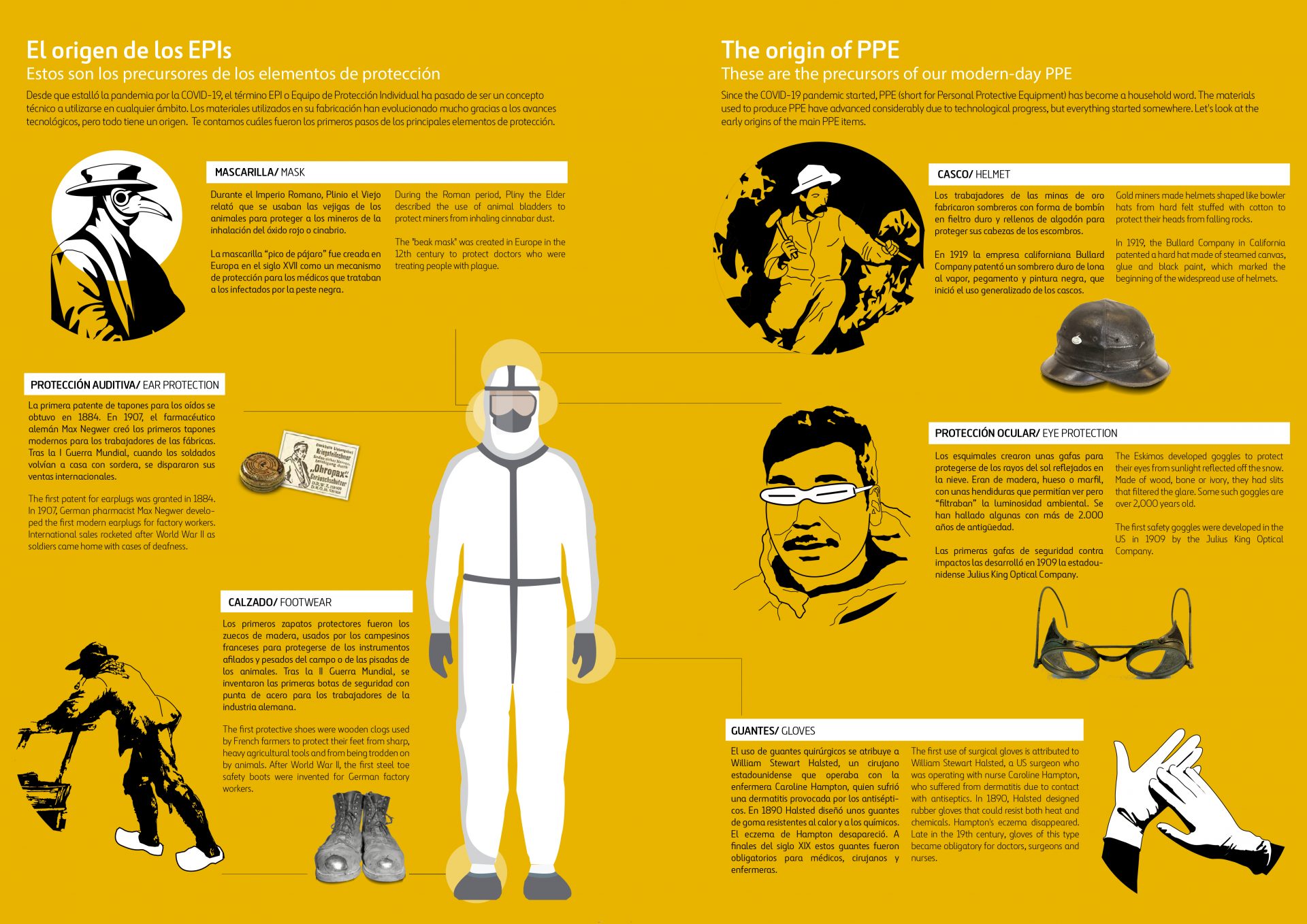Since the COVID-19 pandemic started, PPE (short for Personal Protective Equipment) has become a household word. The materials used to produce PPE have advanced considerably due to technological progress, but everything started somewhere. Let’s look at the early origins of the main PPE items.
Mask
During the Roman period, Pliny the Elder described the use of animal bladders to protect miners from inhaling cinnabar dust.
The “beak mask” was created in Europe in the 12th century to protect doctors who were treating people with plague.
Ear protection
The first patent for earplugs was granted in 1884. In 1907, German pharmacist Max Negwer develo-ped the first modern earplugs for factory workers. International sales rocketed after World War II as soldiers came home with cases of deafness.
Footwear
The first protective shoes were wooden clogs used by French farmers to protect their feet from sharp, heavy agricultural tools and from being trodden on by animals. After World War II, the first steel toe safety boots were invented for German factory workers.
Helmet
Gold miners made helmets shaped like bowler hats from hard felt stuffed with cotton to protect their heads from falling rocks.
In 1919, the Bullard Company in California patented a hard hat made of steamed canvas, glue and black paint, which marked the beginning of the widespread use of helmets.
Eye protection
The Eskimos developed goggles to protect their eyes from sunlight reflected off the snow. Made of wood, bone or ivory, they had slits that filtered the glare. Some such goggles are over 2,000 years old. The first safety goggles were developed in the US in 1909 by the Julius King Optical Company.
Gloves
The first use of surgical gloves is attributed to William Stewart Halsted, a US surgeon who was operating with nurse Caroline Hampton, who suffered from dermatitis due to contact with antiseptics. In 1890, Halsted designed rubber gloves that could resist both heat and chemicals. Hampton’s eczema disappeared. Late in the 19th century, gloves of this type became obligatory for doctors, surgeons and nurses.





















